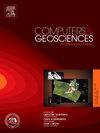Efficient variable precision reduction in chaotic climate models: Analysis of the NEMO case in the destination earth project
IF 4.4
2区 地球科学
Q1 COMPUTER SCIENCE, INTERDISCIPLINARY APPLICATIONS
引用次数: 0
Abstract
Driven by the need to improve computational efficiency, the technique of reducing variable precision in model calculations has recently attracted a lot of attention, particularly in the field of weather and climate simulations models, where computational gains are crucial to produce operational results faster and make better use of HPC resources.
However, the source of computational improvements resulting from working in reduced precision, an aspect that could help facilitate the transition in many applications, has never been thoroughly explained. In this paper, we make a step in this direction, shedding light on how to efficiently apply variable precision reduction in chaotic applications, and presenting a computational study methodology to make this possible.
For this purpose, we employ a tool for automatic porting of oceanographic code to mixed precision recently developed at the Barcelona Supercomputing Center and consider as case studies one of the most widely employed ocean models, NEMO, in one of the most ambitious initiatives to date, Destination Earth, because it aims at creating interactive digital replicas of the Earth with unprecedented precision, supporting real-time decision-making and long-term adaptation strategies, which also entails an unprecedented computational cost in terms of supercomputing. We analyze in depth the impact of mixed precision on the most representative functions of the model, providing a clear step forward in understanding where to focus efforts in precision reduction. These results can guide scientists in significantly speeding up weather and climate models using mixed precision by targeting computationally intensive functions and optimizing communications.
混沌气候模型的有效变精度降低:目的地球项目NEMO案例分析
在提高计算效率的需求的推动下,模型计算中降低变量精度的技术最近引起了很多关注,特别是在天气和气候模拟模型领域,计算增益对于更快地产生操作结果和更好地利用HPC资源至关重要。然而,由于工作精度降低而导致的计算改进的来源,这方面可以帮助促进许多应用程序的过渡,从来没有得到彻底的解释。在本文中,我们朝这个方向迈出了一步,揭示了如何有效地在混沌应用中应用变精度约简,并提出了一种计算研究方法来实现这一目标。为此,我们采用了巴塞罗那超级计算中心最近开发的一种工具,用于自动将海洋代码移植到混合精度,并考虑将最广泛使用的海洋模型之一NEMO作为案例研究,这是迄今为止最雄心勃勃的计划之一,“目的地地球”,因为它旨在以前所未有的精度创建地球的交互式数字复制品,支持实时决策和长期适应策略。就超级计算而言,这也需要前所未有的计算成本。我们深入分析了混合精度对模型中最具代表性的函数的影响,为理解在哪里集中精力降低精度提供了明确的一步。这些结果可以指导科学家通过针对计算密集型功能和优化通信,显著加快使用混合精度的天气和气候模型。
本文章由计算机程序翻译,如有差异,请以英文原文为准。
求助全文
约1分钟内获得全文
求助全文
来源期刊

Computers & Geosciences
地学-地球科学综合
CiteScore
9.30
自引率
6.80%
发文量
164
审稿时长
3.4 months
期刊介绍:
Computers & Geosciences publishes high impact, original research at the interface between Computer Sciences and Geosciences. Publications should apply modern computer science paradigms, whether computational or informatics-based, to address problems in the geosciences.
 求助内容:
求助内容: 应助结果提醒方式:
应助结果提醒方式:


